Naples (Italy) – the most detailed information about the city with photos. The main attractions of Naples with a description, guides and cards.
Contents
Naples (Italy)
Naples is the capital of Southern Italy and the Campania region. City located at the foot of Vesuvius in the bay of the gulf of naples and is the third largest population in the country, second only Rome and Milan. Naples – a city with real Italian temperament, exuberant, chaotic, colorful. Narrow, a little dirty the streets and old shabby buildings give it the atmosphere of some kind recklessness. It seems that this city is never sad. Here always noisy, fun, you can hear music on the streets and aromas soar pizza (which supposedly was invented here, and Neapolitans consider it the best in the world) and coffee.
Naples is very ancient (the city was founded by ancient by the Greeks). And its name can be translated as “new city”. Despite all his problems, it is extremely interesting here, but Naples is still often deprived of the attention of tourists. Although historical the city center is honored to be included in the list of the World UNESCO heritage. It is not only the largest historical centers of the city of the world, but also boasts 448 historical and monumental churches.
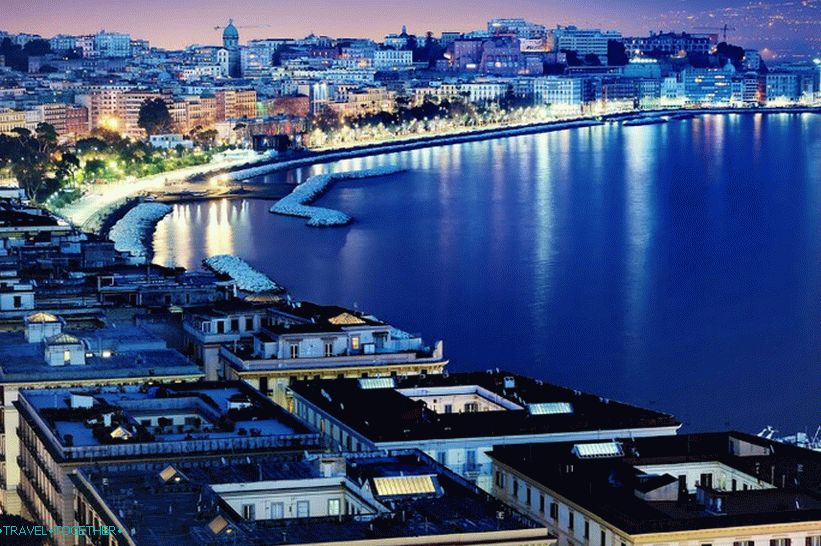 Naples night
Naples night
- Geography and climate
- Practical information
- Story
- How to get there
- Shopping and shopping
- Food and drink
- sights
- Video
- Maps and guides
- Comments and reviews
Geography and climate
Naples is located on the coast of the bay of the same name, which is part of the Tyrrhenian Sea. Tyrrhenian Sea, in turn, is part of the Mediterranean. The city lies in a dangerous next to the volcano Vesuvius. Relief rises from sea level to marks 450 meters. Climate – Mediterranean Wet subtropical. Summer is hot, winter is warm. For the year falls around 1000 mm of precipitation.
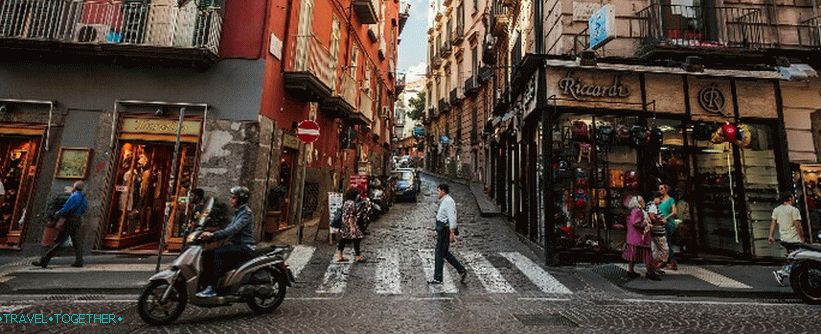 Streets of Naples
Streets of Naples
Practical information
- The population is 967 thousand people.
- The area is 117.3 square kilometers.
- The language is Italian.
- Currency – Euro.
- Visa – Schengen.
- Time – Central European UTC +1, in summer +2.
- Interestingly, indigenous Neapolitans speak the same name dialect. Therefore, even the Italians themselves are often poorly understood.
- The warm season in Naples lasts from June to September. At that time can be pretty hot. The cold season lasts from November to March. The hottest month of the year is August, and the coldest is January. The most comfortable weather in May, June, September and October.
- Sea temperature around Naples in February around 7-12 ºC, in August 25-27 ºC. Bathing is the perfect time from July to September.
- Despite the negative glory of Naples as one of the most criminal cities of Italy subject to the elementary rules he quite safe. Just avoid the unlit streets, watch out for your things and do not show in public that you have a lot of cash of money.
Story
Naples was founded by the ancient Greeks in about the 8th century before our era. Therefore, it can be considered one of the oldest cities in Europe. At first the population was called Partenopa, but in the 6th century it was renamed Neapolis. The new city was important in Greek civilization and was an important center of commerce. Finally Naples became a Roman colony and the gate through which Ancient Greek culture entered the Roman.
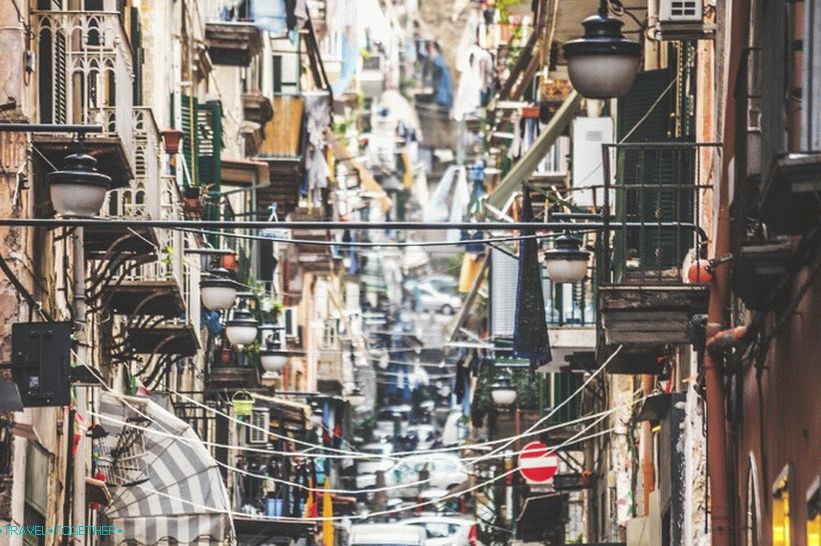 On the streets of Naples
On the streets of Naples
After the fall of the Roman Empire, the city was conquered first Ostrogoths, then Byzantines. In 763, some time was under control of the Pope. In the 8-11 century, Naples was the capital of the duchy of the same name. In 1139 the city became part of Sicilian kingdom, and in 1266 became its capital. In the end The 13th century the kingdom fell apart. In the 16th century, there was some time under the control of Italy. By the 17th century, Naples was one of the largest European cities, second only to Paris in terms of population.
 Old city
Old city
Naples joined Italy in 1861. Most of modern Naples was built under the Mussolini regime, and also in recovery period after the Second World War bombings of war.
How to get there
Naples has Capodichino International Airport. From the airport to the city so far can only be reached by bus, which has only two stops: Stazione Centrale (central station) and Piazza Municipio. Railway communication developed almost immediately by all major cities of Italy. Naples is connected to Rome by the motorway A1. Highways in Italy – are paid.
The city is a major port. Ferries and large passenger ships connect Naples with Sicily, Sardinia, Tunisia and Corsica.
To get around the city, you can use the metro, trams and buses.
Shopping and shopping
Naples is famous for its markets and a huge number of small shops.
 Stores in Naples
Stores in Naples
The largest and most interesting shopping districts:
- La Torretta Market, located near the US Embassy. Here you can buy a variety of fresh produce, cheeses and meats.
- Via San Gregorio Armeno – narrow lane in the center of Naples with traditional Neapolitan goods and souvenirs.
- Poggioreale Market – the largest market of the city (more than 500 outlets).
- Antiques Market – located on the waterfront of Naples. Here you can buy antiques.
Food and drink
Naples is the gastronomic capital of southern Italy. It is believed that The first pizza began to do here. Neapolitan pizza different thicker dough. If you want to try “real Neapolitan pizza”, go to Pizzeria Brandi, where pizza margarita was born. Great pizza is also made in the area. Via dei Tribunali. Find a good pizzeria is quite simple. Step aside from popular tourist routes. Look – how many are local in this institution. If yes, then you can boldly order there.
 Neapolitan pizza
Neapolitan pizza
Neapolitan cuisine also includes many dishes from seafood, pasta with various sauces. Of popular drinks coffee, wine and the famous limoncella.
sights
Throughout history, Naples witnessed cruel battles and many civilizations sought to conquer it. Greeks, Romans, Spaniards, French, each of these peoples left their track. Here in the narrow streets among the old buildings, the ancient attractions, old churches frozen real story.
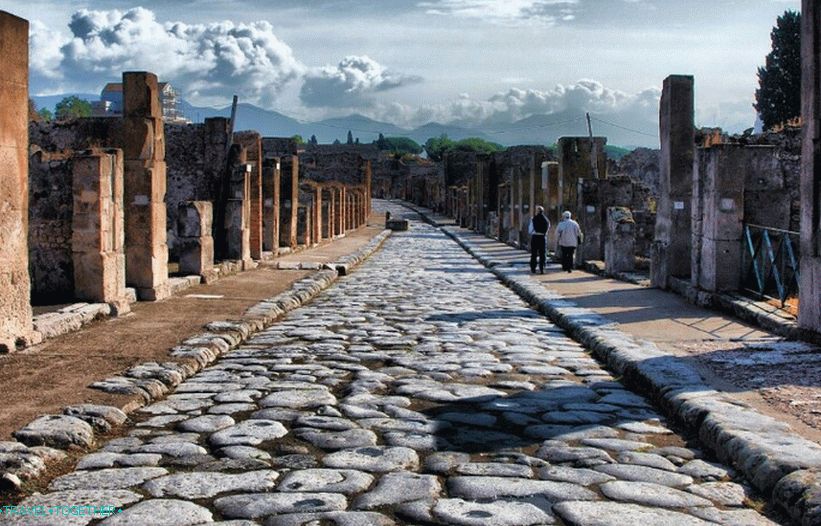 Pompeii
Pompeii
Pompeii – the legendary ancient city destroyed during the devastating eruption of Vesuvius in 79 AD at the peak its power. Despite the lava flows and tons of ash that buried the city and its inhabitants, it was preserved in a fantastic condition.
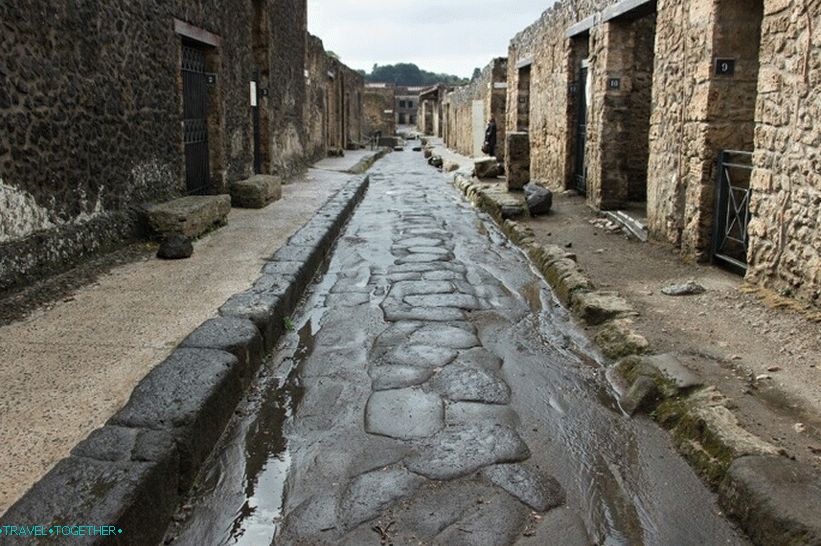 Streets of Pompeii
Streets of Pompeii
Pompeii are extensive ruins. Here preserved roads, house walls, temple fragments, public buildings, and even murals in some houses. The most interesting places – the ruins Amphitheater, Roman theaters, baths, Forum surroundings, temples Apollo and Jupiter. Pompeii was quite extensive and developed in times a city. Even now, the excavations here are not completely completed. And among all sorts of archaeological finds are found petrified remains of unhappy people, the last inhabitants of Pompeii.
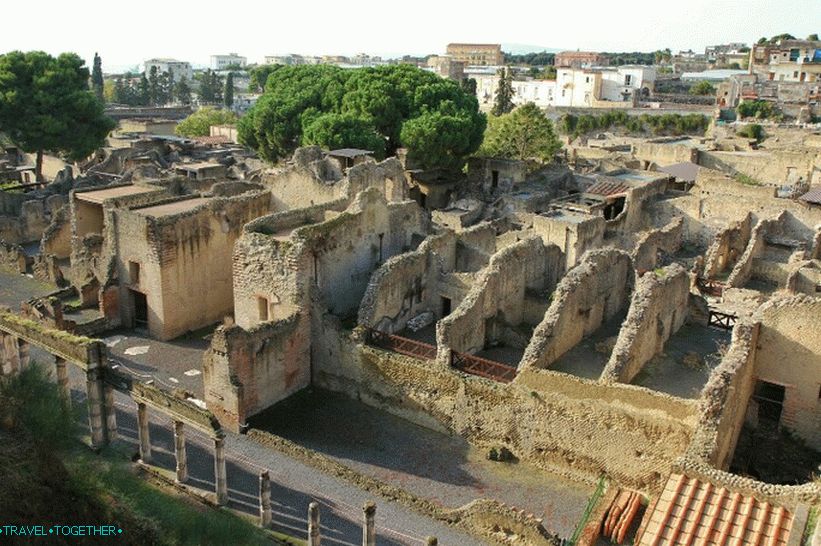
Herculaneum is another city destroyed by Vesuvius. Despite that he was farther away from the awakened volcano than Pompeii, it did not save him. Herculaneum is actually much better preserved. Some buildings still have some wooden ones. construction, frame and roof. The interesting sights of these Ruins – Papiri’s Villa and the House of Argus, where beautiful murals survived and wall paintings.
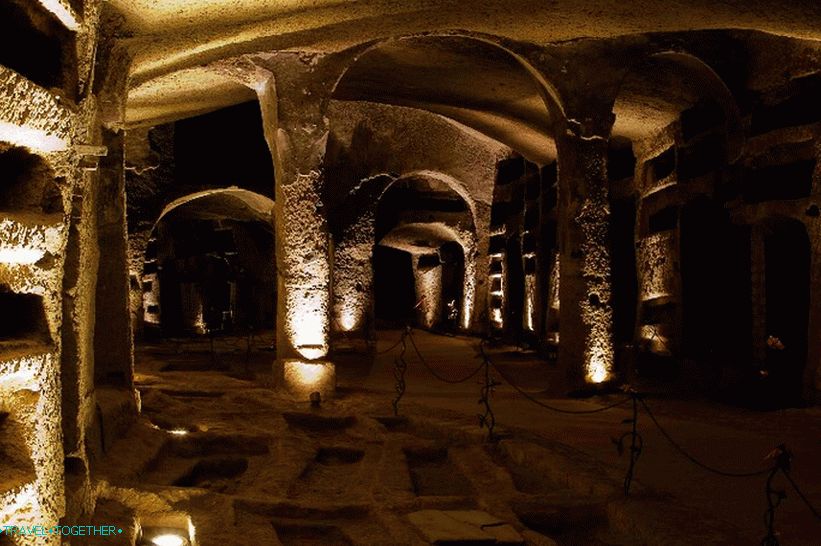 Catacombs of Naples
Catacombs of Naples
San Gennaro – a network of catacombs located in the northern part Naples near the church dell’Incoronata. The catacombs are a network of tunnels and walkways with ancient tombs. Have two level:
- the ground floor contains more than 3,000 burials. It is dimly lit, to give it a bit of a creepy atmosphere.
- the upper level is more spacious and bright. Contains many detailed frescoes and paintings.
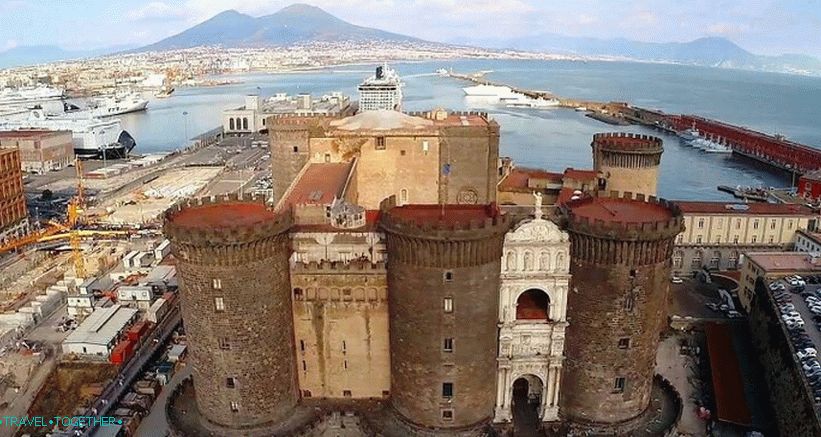 Castel Nuovo
Castel Nuovo
Castel Nuovo – one of the symbols of Naples, a huge and mighty medieval castle located on the shores of the Gulf of Naples very close to the famous piazza del plebiscito. The castle is a fortress with 5 powerful towers. The Triumphal Arch of the Early Renaissance is the entrance. Castel Nuovo was built in the 13th century and was the residence of kings and governors of Naples. Now here is a city museum with various collections and paintings with an emphasis on Italian painting 19th century.
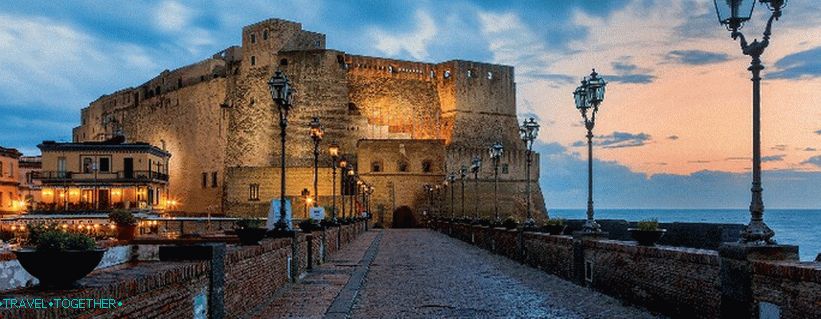 Castel del ovo
Castel del ovo
Castel del Ovo – a stunning medieval castle on the island. It is the oldest surviving fortification of Naples. date The foundation of the fortress dates back to the 6th century. Currently castel del ovo is open to the public.
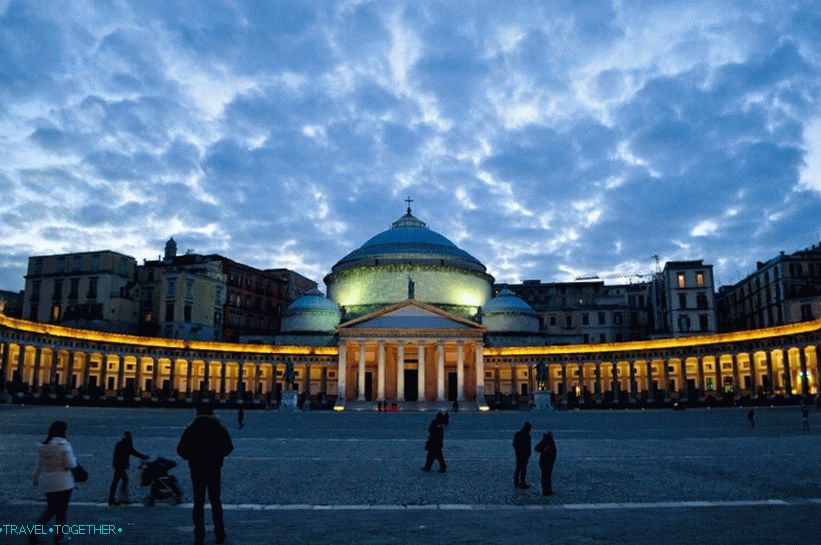 Piazza del plebescito
Piazza del plebescito
Piazza del Plebescito is the most famous square of Naples. it the vast open space is filled with important buildings and statues: the royal court and the Royal Basilica with a colonnade (or more precisely San Francesco di Paola, built in the 19th century on the model Pantheon), the palace of Salerno, the palace of the prefecture and the statue dedicated Charles III, King of Spain.
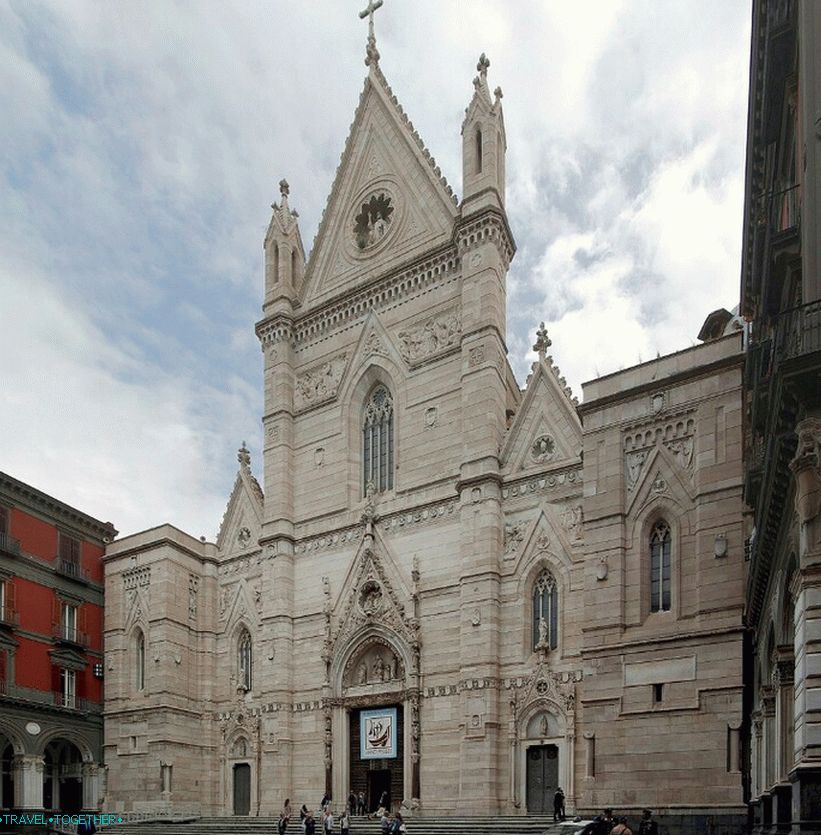 Duomo
Duomo
Duomo – the cathedral and the most important temple of Naples. Built in the 13th century by Charles I of Anjou on the foundation of the ancients churches. This religious building combines many styles including gothic, renaissance and baroque. The cathedral has a big central tower and many decorative sculptures and others decorations.
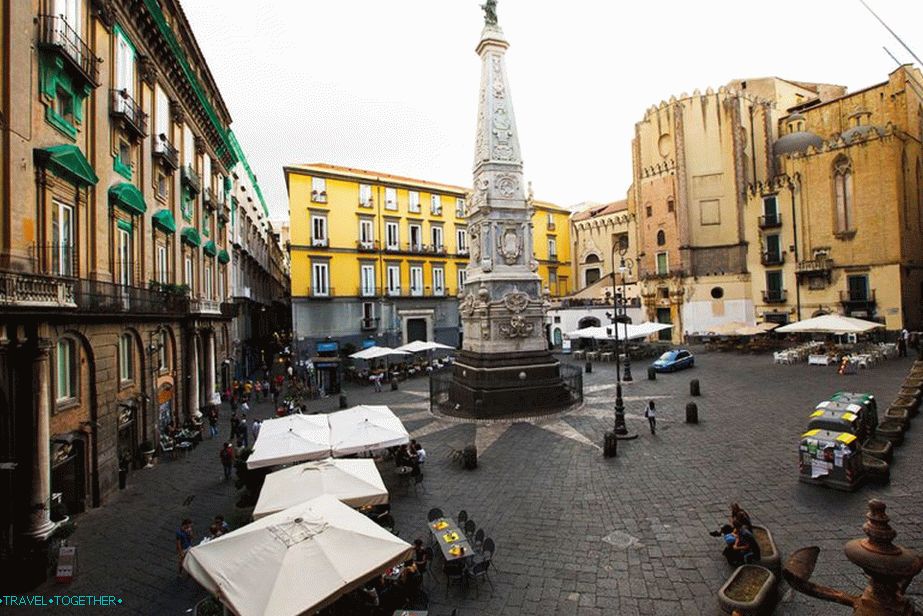 San Domenico Maggiore
San Domenico Maggiore
San Domenico Maggiore is an unusual church founded by monks Dominicans in the 14th century. Located in the center of the old town Naples close to the university and the metro station Dante. Despite the rather inconspicuous facade inside the basil is simply amazing: Renaissance works of art, sculpture and decoration, the panel ceiling is gold plated and a stunning altar.
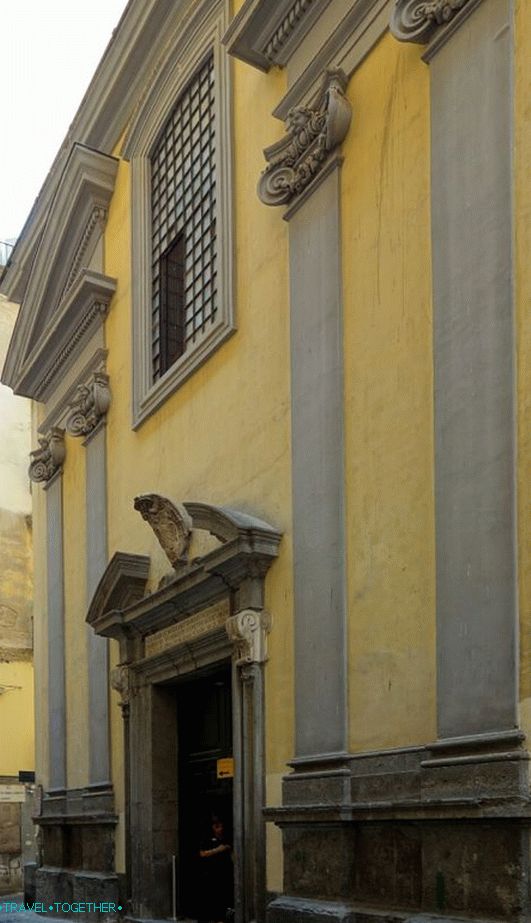 San Severo
San Severo
San Severo is a small 16th century chapel. Although this chapel quite simple and unassuming outside, its interior is very impressive and is a real highlight. Chapel contains a huge number of works of art and several famous sculptures. The ceiling is decorated with a magnificent fresco. Central place takes a beautiful statue of the cover of Christ, created by Giuseppe Sanmartino.
 Palazzo Reale
Palazzo Reale
The Palazzo Reale is a stunning royal palace that located in Piazza del Plebiscito. The facade of this building has a symmetrical series of dark frames and many windows to create an official and impressive look. In the niches of the palace are 12 statues of kings and rulers of Naples. Inside the palace is located many luxurious rooms with rich interior.
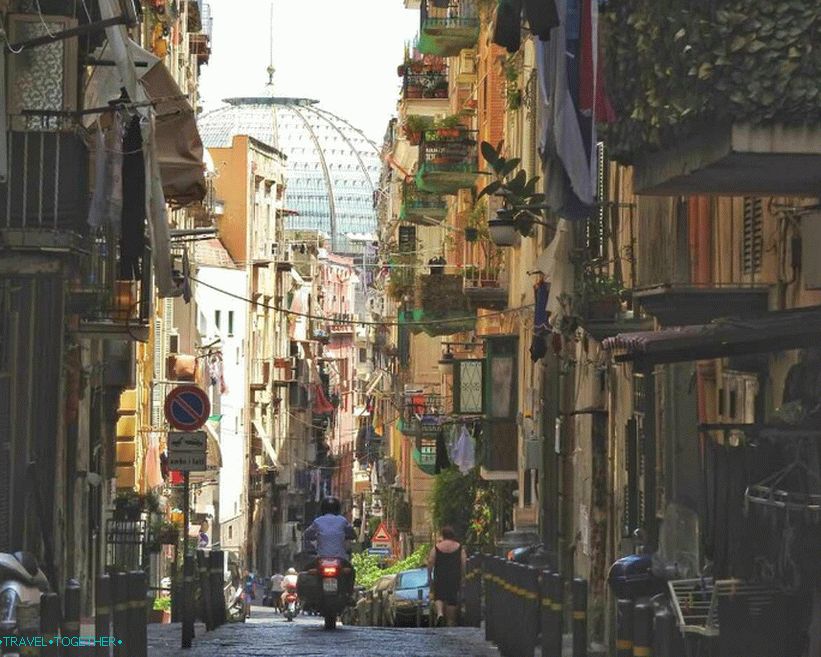 Santa lucia
Santa lucia
Santa Lucia – the area west of Piazza del Plebiscito with many narrow cobbled streets that go down to the sea and offer a variety of handicraft shops, restaurants, cafes and shops. A piece of this Naples and its atmosphere.
Video
Maps and guides
Metro City Map






